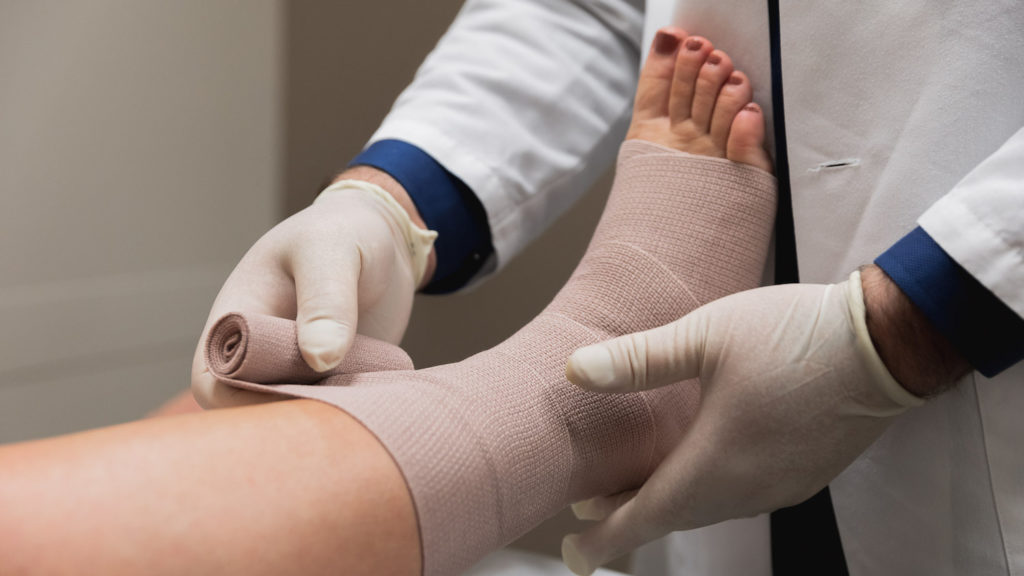

A Lisfranc (midfoot) injury is a foot injury that occurs from a twist and fall or from a traumatic accident such as a fall from height. It is usually caused when the foot is flexed downwards and twisted. During the injury, the bones or ligaments in the midfoot may be broken or torn.
Symptoms of a lisfranc injury include pain and swelling on the top of the foot. Pain may be worse with walking or standing, so patients may be unable to bear weight. Bruising on the bottom of the midfoot is highly suggestive of a Lisfranc injury. This is a serious issue that should be evaluated because if it is missed or treatment is delayed it could result in chronic pain, arthritis, arch collapse or a more in-depth surgery.
On physical exam patients will have tenderness to palpation over the midfoot joints, bruising on the bottom of the foot, swelling in the foot, pain with moving the toes up and down and unable to go up on toes while standing on one foot.
X-rays of the foot are taken to evaluate for fractures. Standing, weight bearing x-rays are needed. An AP bilateral weight bearing view is taken to evaluate the foot joints compared to the other un-injured side. If there is an injury to the Lisfranc ligament, there may be widening of the interval between the first and second ray. There also may be a bony fragment (Fleck sign) in the first intermetatarsal joint, which is diagnostic of a Lisfranc injury. If there is tenderness over the midfoot joints, but no clear evidence of a Lisfranc injury on x-rays, an MRI may be needed to evaluate the ligament closer.

The severity of the ligament damage and bony injury will determine treatment. If there is no bony injury or widening of the joint seen on X-ray then weight bearing in a CAM boot may be used. If the ligament is torn or there are associated bony injuries such as fractures, then surgery will be needed. There are a couple different types of surgery depending on the quality of the bone and joints. The most common surgery is an open reduction internal fixation (ORIF) with a screw placed to hold the Lisfranc joint in the proper alignment. Patients will be non-weight bearing in a CAM boot for 6 weeks followed by weight bearing in the CAM boot for 6 weeks. If the injury is on the right foot patients will not be able to drive until they are out of the boot. About 5 months after surgery, another surgery is performed to remove the screw because over time with the motion of the joints in the foot the screw can break. Even after a successful surgery, arthritis may occur due to the cartilage damage from the initial injury, which may need a fusion surgery in the future.
If there are other associated fractures and damage to the midfoot joints, such as arthritis or arch collapse, a fusion may be performed. During a fusion, screws are used to help hold the joints in place to allow them to join together. This will decrease pain and patients will have a normal gait after recovery from surgery. Patients who need a fusion will be in a non-weight bearing cast for 6 weeks followed by weight bearing in a CAM boot for 4 weeks. The hardware is usually left in unlike an ORIF of the Lisfranc joint.


